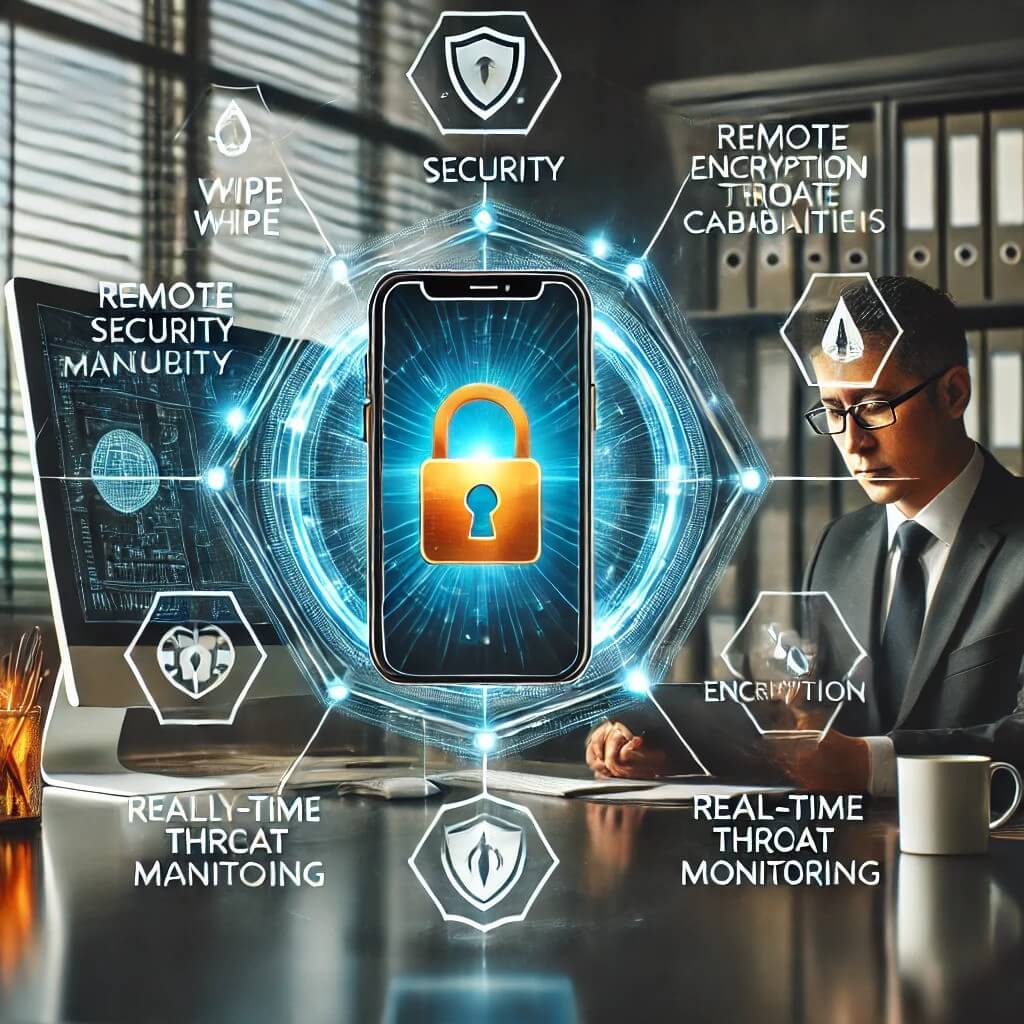Introduction
Mobile Device Management (MDM) is a critical solution for businesses today, helping manage, monitor, and secure mobile devices like smartphones, tablets, and laptops. MDM ensures compliance with company policies and security protocols, enhancing productivity and operational efficiency.
What is Mobile Device Management?

Mobile Device Management (MDM) refers to the systems and processes used by IT administrators to control, secure, and enforce policies on mobile devices within an organization. It covers a wide range of functionalities, from device tracking and application management to data encryption and remote wiping.
Improved Security
MDM significantly enhances security by protecting sensitive data on mobile devices. Features like remote wipe allow IT administrators to erase data if a device is lost or stolen. Encryption safeguards data from unauthorized access, while real-time threat monitoring helps detect and mitigate cyber threats.
Streamlined Operations
MDM streamlines operations by allowing IT administrators to centrally control updates, enforce policies, and manage applications across all devices. This centralized approach automates many manual tasks, saving time and reducing errors, thus improving operational efficiency.
Enhanced Productivity
MDM boosts productivity by ensuring employees have access to necessary apps and resources. It minimizes downtime by keeping devices updated and functioning optimally. Remote troubleshooting capabilities allow quick issue resolution, keeping employees connected and productive.
Cost-Effectiveness
MDM is cost-effective as it automates IT tasks, reducing the need for manual intervention and lowering operational costs. It minimizes the risk of costly data breaches with improved security measures and ensures devices are properly maintained, extending their lifespan.
Compliance and Regulations
MDM helps businesses adhere to regulatory requirements by enforcing data protection policies, monitoring device usage, and generating audit reports. This ensures compliance with legal standards and builds trust with clients and regulatory bodies.
Real-world Applications
MDM solutions provide tangible benefits across various industries. For example, a financial firm can use MDM to protect sensitive client information with features like remote wipe and encryption, reducing the risk of data breaches. A global marketing agency can streamline operations with centralized device management, ensuring employees always have access to necessary tools, thus boosting productivity.
MDM for Different Devices
MDM is also applicable to managing devices provided through MacBook rental and laptop rental services. These solutions allow businesses to ensure that rented devices are secure, up-to-date, and compliant with company policies, providing flexibility and scalability in their IT infrastructure.
Conclusion
Implementing MDM is essential for businesses looking to enhance IT security, streamline operations, boost employee productivity, and ensure regulatory compliance. By efficiently managing mobile devices, businesses can safeguard sensitive data and maintain regulatory standards.
FAQs
What is MDM?
MDM stands for Mobile Device Management, a system used to manage, monitor, and secure mobile devices within an organization.
How does MDM improve security?
MDM improves security by enabling features like remote wipe, encryption, and real-time threat monitoring to protect sensitive data.
Can MDM reduce costs?
Yes, MDM reduces costs by automating IT tasks, minimizing data breach risks, and extending device lifespans through proper maintenance.
What are the regulatory benefits of MDM?
MDM ensures compliance with regulatory requirements by enforcing data protection policies, monitoring device usage, and generating audit reports.
How can my business implement MDM?
Businesses can implement MDM by contacting service providers or integrating MDM solutions into their existing IT infrastructure.









